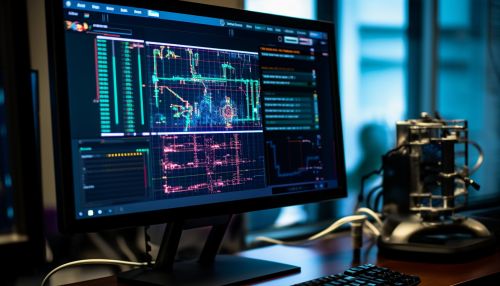The Role of Machine Learning in Predictive Maintenance
Introduction
Machine learning is a subset of Artificial Intelligence that provides systems the ability to learn and improve from experience without being explicitly programmed. In the context of Predictive Maintenance, machine learning plays a crucial role in predicting and preventing potential system failures. This article explores the role of machine learning in predictive maintenance, its applications, advantages, and the challenges faced.


Role of Machine Learning in Predictive Maintenance
Predictive maintenance employs machine learning algorithms to analyze data from machinery and predict future failures. Machine learning models can learn from historical data and identify patterns that humans may overlook. These patterns can be used to predict future failures and schedule maintenance before the failure occurs, thus minimizing downtime and reducing maintenance costs.
Data Collection
The first step in predictive maintenance is data collection. Sensors installed on machinery collect data such as temperature, pressure, vibration, and more. This data is then fed into a machine learning model for analysis. The quality and quantity of data collected directly influence the accuracy of the predictions made by the machine learning model.
Data Processing
Once the data is collected, it is preprocessed to remove noise and outliers. This step is crucial as it ensures that the machine learning model is trained on clean and accurate data. The preprocessed data is then split into training and testing datasets. The training dataset is used to train the machine learning model, while the testing dataset is used to evaluate the model's performance.
Model Training
The next step is model training. The machine learning model is trained on the training dataset. During training, the model learns to identify patterns in the data that indicate potential failures. The type of machine learning algorithm used for training depends on the type of data and the specific requirements of the predictive maintenance task.
Model Evaluation
After the model is trained, it is evaluated on the testing dataset. The model's predictions are compared with the actual outcomes to determine the model's accuracy. If the model's performance is not satisfactory, the model may be retrained with different parameters or a different algorithm may be used.
Predictive Maintenance
Once the model is trained and evaluated, it is used for predictive maintenance. The model analyzes real-time data from the machinery and predicts potential failures. If a potential failure is predicted, maintenance can be scheduled before the failure occurs, thus minimizing downtime and reducing maintenance costs.
Applications of Machine Learning in Predictive Maintenance
Machine learning has numerous applications in predictive maintenance across various industries. In the aerospace industry, machine learning models are used to predict potential failures in aircraft engines. In the energy industry, machine learning is used to predict failures in wind turbines. In the manufacturing industry, machine learning models are used to predict failures in production machinery.
Advantages of Machine Learning in Predictive Maintenance
Machine learning offers several advantages in predictive maintenance. It can analyze large amounts of data and identify patterns that humans may overlook. This leads to more accurate predictions and more effective maintenance schedules. Machine learning models can also adapt to changes in the data, making them more robust than traditional predictive maintenance methods.
Challenges in Implementing Machine Learning in Predictive Maintenance
Despite its advantages, implementing machine learning in predictive maintenance presents several challenges. Collecting and preprocessing the data can be time-consuming and costly. Training and evaluating the machine learning model requires expertise in machine learning and data science. Furthermore, the predictions made by the machine learning model are only as good as the data it is trained on. If the data is not representative of the machinery's operating conditions, the predictions may not be accurate.
Conclusion
Machine learning plays a crucial role in predictive maintenance. It can analyze large amounts of data, identify patterns, and predict potential failures. This leads to more effective maintenance schedules, minimized downtime, and reduced maintenance costs. Despite the challenges, the benefits of implementing machine learning in predictive maintenance make it a promising solution for various industries.
